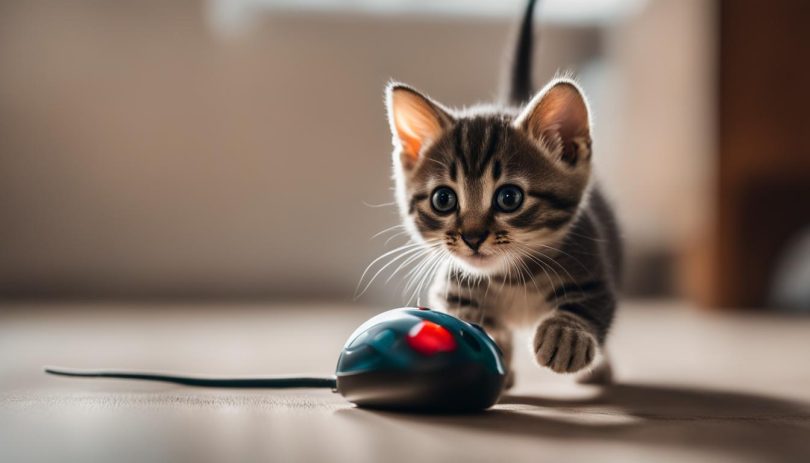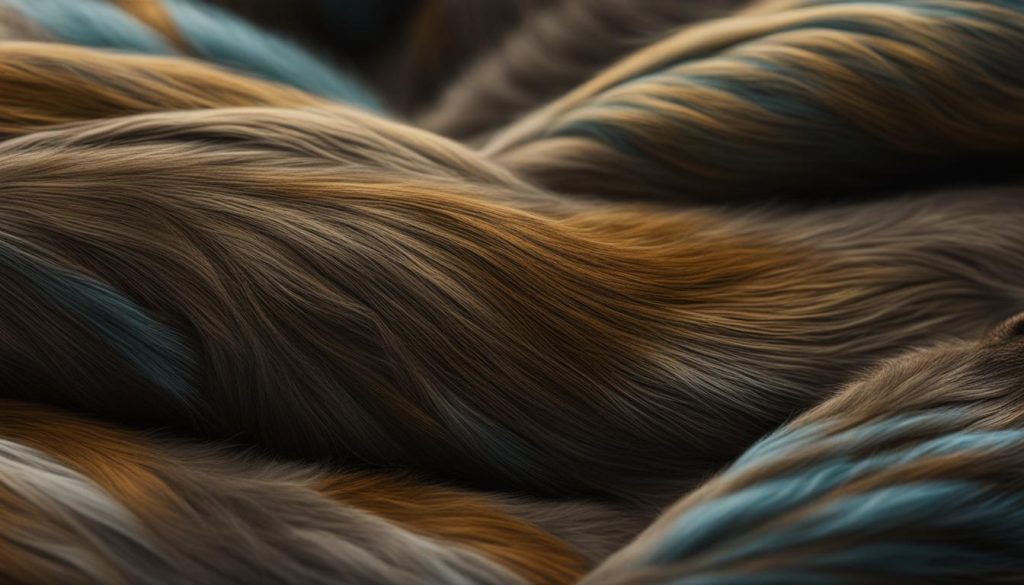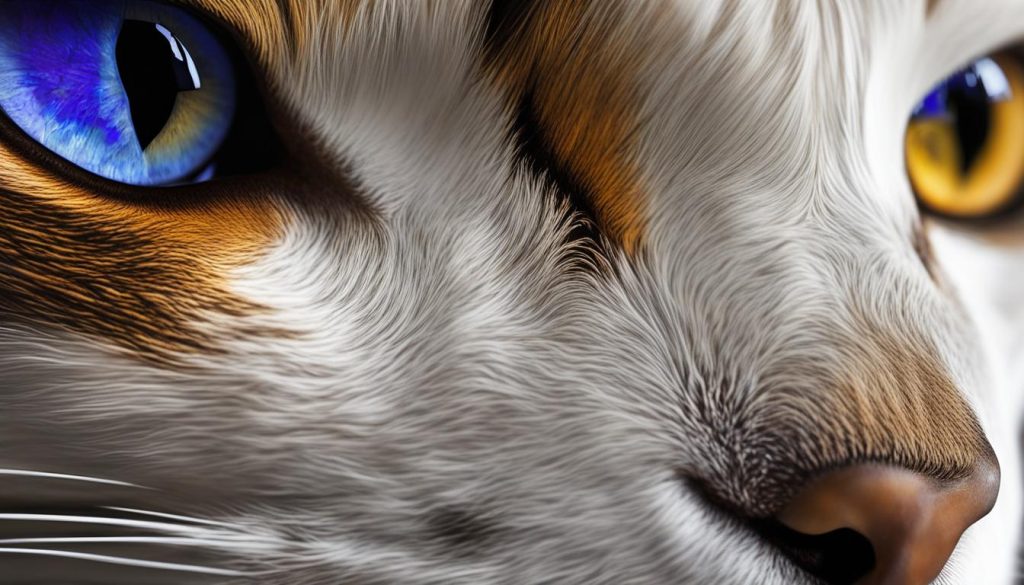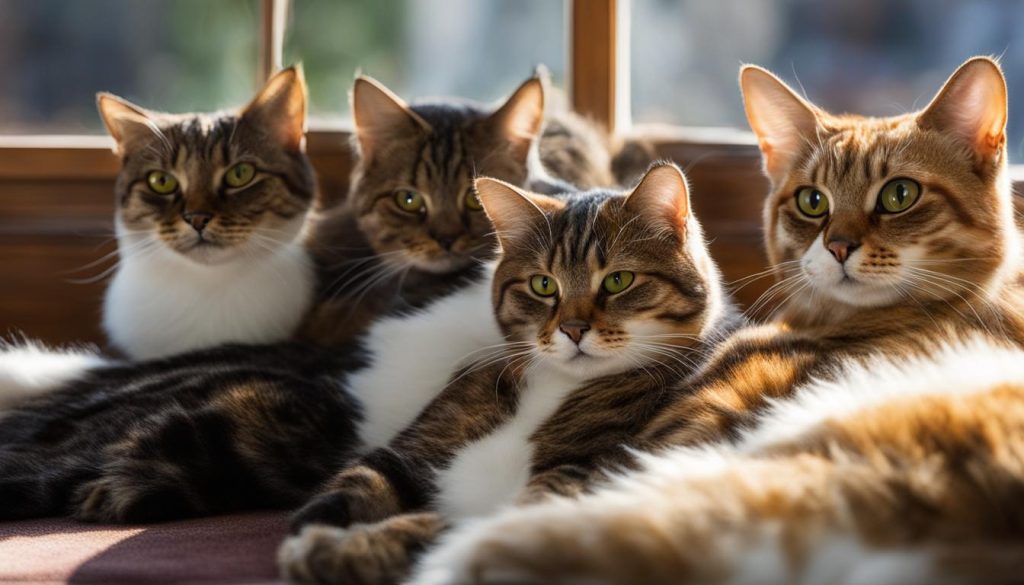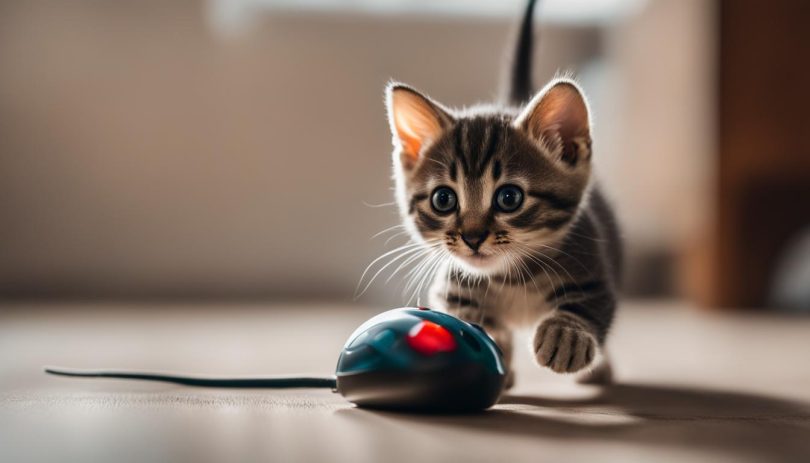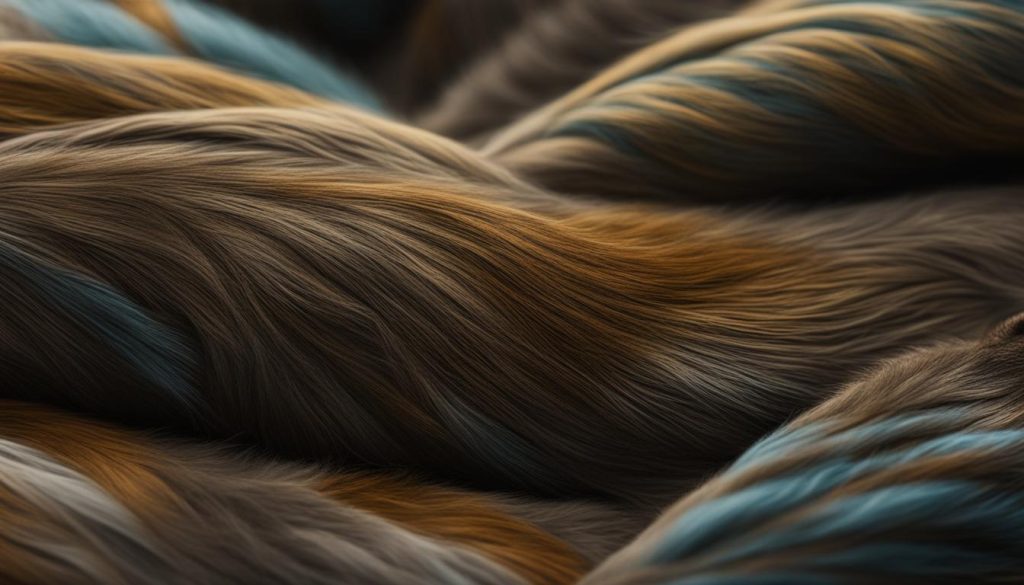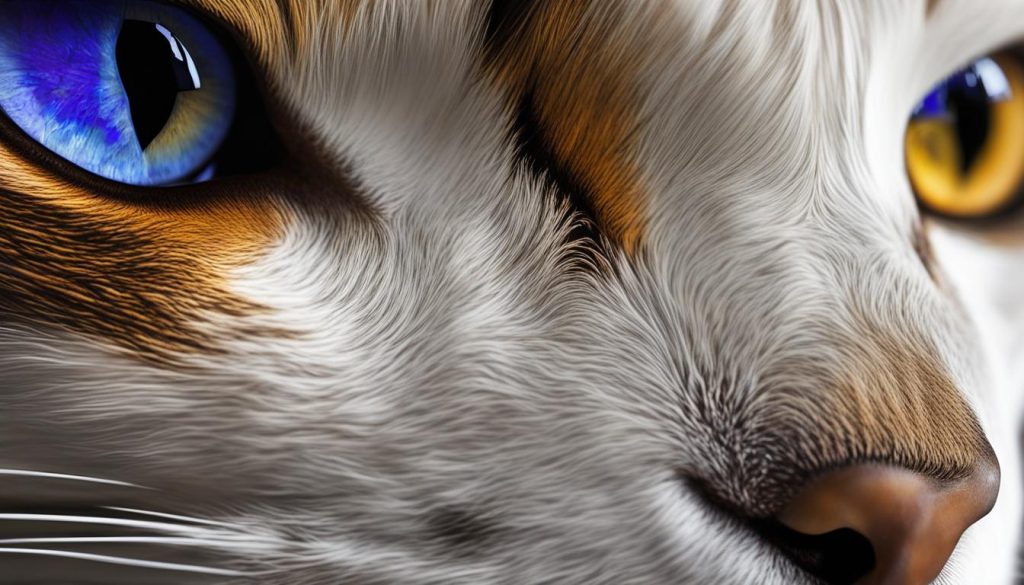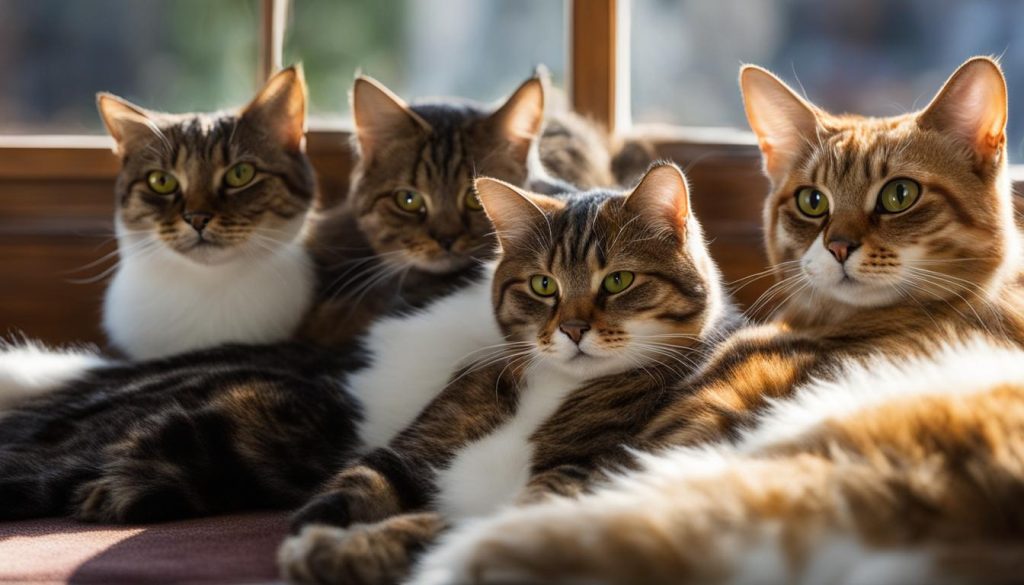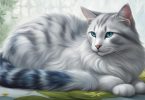As a cat lover, I have always been fascinated by the diverse and unique characteristics of different cat breeds. One particular breed that has caught my attention is the European Shorthair. With its medium height and weight, wide range of colors and patterns, and friendly nature, this breed stands out among the rest. In this guide, I will take you through the various traits that make European Shorthair cats so special.
Key Takeaways:
- European Shorthair cats have a medium height and weight.
- They come in a wide range of colors and patterns.
- Adult males can grow to be large in size.
- They are known for their adaptability and friendly nature.
- Regular grooming and proper care are essential for their well-being.
Size and Weight of European Shorthair Cats
The European Shorthair cats are known for their medium to large size, distinguishing them from other breeds. Adult males can weigh over 15 pounds, making them a robust and substantial feline companion. However, it’s important to note that size and weight can vary within the breed, with some individuals falling under the large category (>15 pounds) and others falling under the medium-large category (>12 pounds). This variability adds to the unique charm of European Shorthair cats.
When considering the physical traits of European Shorthair cats, their size and weight play an essential role in their overall appearance and presence. These sturdy and well-built cats have a strong presence, making them an impressive addition to any home.
Table: Size and Weight Categories of European Shorthair Cats
| Category | Weight Range |
|---|---|
| Large | Over 15 pounds |
| Medium-Large | 12-15 pounds |
As showcased in the table, European Shorthair cats fall within different weight ranges, indicating the diversity within the breed. Whether you prefer a larger cat or a slightly smaller one, European Shorthair cats can fulfill your desire for a feline companion of considerable size.
Next, let’s explore the fascinating coat of European Shorthair cats and the distinct patterns and colors that make them truly captivating.
Coat of European Shorthair Cats
The coat of European Shorthair cats is one of their most distinguishing features. This breed boasts a variety of coat lengths, ranging from short to medium. The short-haired coat is sleek and smooth, while the medium-haired coat has a slightly longer and denser texture. This diversity in coat length adds to the overall charm and uniqueness of the European Shorthair.
European Shorthair cats also come in a wide range of colors and patterns. Their coats can exhibit solid colors, such as black, white, blue, cream, and red, as well as various tabby patterns, tortoiseshell, and calico. These stunning color variations and intricate patterns make every European Shorthair cat a true work of art.
Coat Colors and Patterns
Here are some common coat colors and patterns found in European Shorthair cats:
- Tabby: This pattern features stripes, spots, or swirls on a solid background color.
- Tortoiseshell: These cats have a mix of two colors, usually black and orange or black and cream, creating a unique mosaic-like pattern.
- Calico: Calico cats have three colors – white, black, and orange – in distinct patches throughout their coat.
- Bicolor: Bicolor cats have a coat that is predominantly white with patches of another color.
Overall, the beautiful coat of the European Shorthair is a testament to the breed’s elegance and allure. Whether short or medium in length, and whether exhibiting solid colors or intricate patterns, their coats make them stand out from the crowd.
| Coat Length | Coat Colors and Patterns |
|---|---|
| Short | Solid colors, tabby patterns |
| Medium | Solid colors, tabby patterns, tortoiseshell, calico, bicolor |
Grooming Needs of European Shorthair Cats
Grooming plays an important role in maintaining the health and appearance of European Shorthair cats. While they have moderate grooming needs, regular care is essential to keep their coat in good condition and ensure overall hygiene.
European Shorthair cats are known for their self-grooming abilities, but they still require some assistance from their human companions. Weekly combing is recommended to remove loose hair, prevent matting, and promote healthy skin. This not only keeps their coat looking sleek and shiny but also helps to reduce shedding.
In addition to combing, other grooming needs include claw-trimming, teeth-brushing, and occasional baths. Trimming their claws regularly can prevent them from becoming too sharp or causing damage. Brushing their teeth with cat-specific toothpaste helps maintain oral hygiene and prevents dental issues. Baths may be necessary occasionally, especially if they get dirty or have a skin condition that requires special care.
It’s important to create a positive and stress-free grooming experience for your European Shorthair cat. Start grooming sessions from a young age and use gentle techniques to make them feel comfortable. Offer treats and praise to reward good behavior during grooming. If your cat is anxious or resistant to grooming, consult with a professional groomer or veterinarian for guidance and assistance.
| Grooming Needs | Frequency |
|---|---|
| Combing | Weekly |
| Claw-trimming | As needed |
| Teeth-brushing | Several times a month |
| Bathing | Occasionally, as needed |
Grooming not only keeps European Shorthair cats looking their best but also allows you to bond with them and monitor their overall well-being. Regular grooming sessions provide an opportunity to check for any abnormalities, such as skin irritations, lumps, or fleas. If you notice anything unusual, consult with a veterinarian for further examination and appropriate treatment.
Personality and Temperament of European Shorthair Cats
The personality and temperament of European Shorthair cats make them excellent companions for cat lovers. They are known for their friendly nature and adaptability, making them easy to integrate into various households and environments. These cats have a charming and affectionate disposition, and they form strong bonds with their human family members.
European Shorthair cats are highly intelligent and enjoy interactive playtime. They are known to be curious and will often explore their surroundings with enthusiasm. Providing them with a variety of toys and engaging activities will keep them mentally stimulated and satisfied.
While European Shorthair cats are generally sociable, they may be initially shy or timid around strangers. It is important to provide them with a safe space to retreat to when they feel overwhelmed or anxious. With patience and gentle encouragement, they will gradually warm up to new people and environments.
These cats also get along well with other pets and are particularly fond of children. They have a gentle and tolerant nature, making them a great choice for families with kids. However, as with any cat, it is essential to teach children how to properly handle and interact with them to ensure everyone’s safety and well-being.
| Traits | Description |
|---|---|
| Adaptability | European Shorthair cats can quickly adapt to new environments and households. |
| Friendliness | They have a friendly and affectionate nature, forming strong bonds with their human family members. |
| Intelligence | These cats are highly intelligent and enjoy interactive playtime and mental stimulation. |
| Curiosity | European Shorthair cats are curious and love to explore their surroundings. |
| Shyness | They may be initially shy or timid around strangers and may need a safe space to retreat to. |
| Sociability | They get along well with other pets, including dogs, and are particularly fond of children. |
Overall, European Shorthair cats are delightful companions that bring joy and affection to their owners. Their adaptability, intelligence, and friendly nature make them an ideal choice for cat lovers looking for a versatile and loving feline companion.
Overall, the captivating eye colors of European Shorthair cats enhance their beauty and individuality. Whether their eyes are blue, amber, green, or odd-eyed, these feline companions never fail to capture our attention and steal our hearts.
Longevity of European Shorthair Cats
When it comes to the longevity of European Shorthair cats, they have an impressive average lifespan of 15 to 20 years. With proper care and a healthy lifestyle, these feline companions can live a long and fulfilling life. However, it’s important to note that like any cat breed, they may be prone to certain health concerns.
Regular veterinary check-ups are essential to monitor their overall well-being and address any potential issues early on. Common health concerns that European Shorthair cats may face include:
- Heart disease
- Obesity
- Kidney disease
- Dental problems
- Hypertension
By staying proactive in their healthcare and addressing these concerns, cat owners can help ensure a longer and healthier life for their European Shorthair companions. Implementing a balanced diet, providing regular exercise and mental stimulation, and maintaining good oral hygiene are all important aspects of their overall care.
| Health Concern | Description |
|---|---|
| Heart disease | European Shorthair cats may be prone to heart conditions such as hypertrophic cardiomyopathy (HCM). |
| Obesity | These cats have a tendency to gain weight if their diet and exercise are not properly managed. |
| Kidney disease | Chronic kidney disease is a common health issue among cats in general, including European Shorthairs. |
| Dental problems | Regular dental care is important to prevent periodontal disease and maintain good oral health. |
| Hypertension | High blood pressure can occur in European Shorthair cats, especially as they age. |
Understanding these potential health concerns and taking proactive measures to address them can help ensure a long and happy life for European Shorthair cats.
Club Recognition and Prevalence of European Shorthair Cats
European Shorthair cats, with their unique traits and charm, have gained recognition from various cat associations. Although more common in Europe, where they originated, they are considered rare in the rest of the world. Their distinct coat colors and patterns, as well as their friendly and adaptable nature, make them a sought-after breed among cat lovers.
In Europe, where the breed is prevalent, European Shorthair cats are often seen in households and are well-regarded for their qualities. However, in other parts of the world, they are still gaining popularity and recognition.
| Club | Description |
|---|---|
| National Cat Club (UK) | The National Cat Club in the United Kingdom recognizes the European Shorthair breed and promotes their breeding and exhibition. |
| Fédération Internationale Féline (FIFe) | FIFe, a federation of cat clubs from various countries, includes the European Shorthair breed in its list of recognized breeds. |
| Cat Fanciers’ Association (CFA) | The CFA, based in the United States, recognizes European Shorthair cats as a miscellaneous breed. They can participate in CFA shows in the miscellaneous class. |
While the European Shorthair cat may not be as widespread globally, its unique traits and historical significance continue to captivate cat enthusiasts, gradually increasing its presence outside of Europe.
Notable Quotes:
“European Shorthair cats are an enchanting breed, admired for their adaptability and friendly nature. Their recognition by various cat associations highlights their appeal among cat lovers.” – Cat Fancy Magazine
“Although rare outside of Europe, European Shorthair cats are treasures waiting to be discovered by cat enthusiasts around the world.” – International Cat Club
History of European Shorthair Cats
The European Shorthair cat has a fascinating history that can be traced back to ancient Rome. These cats were highly valued for their exceptional hunting skills and were used to protect food supplies from rodents and pests. Over time, they became popular on farms throughout Europe and eventually evolved into the contemporary European Shorthair breed. Today, they are even recognized as the national cat of Finland.
Throughout history, European Shorthair cats have played a significant role in controlling rodent populations and safeguarding essential resources. Their exceptional abilities and natural instincts made them invaluable companions to humans. As their reputation grew, so did their popularity among cat enthusiasts, leading to the development of breed standards to preserve their distinct characteristics.
The European Shorthair’s journey from an indispensable farm cat to a beloved and sought-after breed is a testament to their adaptability, resilience, and enduring appeal. Their unique history adds to their allure and makes them a fascinating breed that continues to captivate cat lovers around the world.
The Contemporary European Shorthair Cat
The European Shorthair breed is a refined and captivating version of the common housecat found in Europe. With its elegant and sleek coat, this breed stands out from the crowd. The European Shorthair is not your ordinary feline companion; it possesses several unique traits that make it a beloved choice among cat lovers.
Alongside its physical beauty, the European Shorthair boasts strong hunting instincts, a testament to its ancestry. This breed is agile and quick, making it an excellent hunter. Despite its hunting skills, these cats have a friendly and sociable disposition. They are adaptable creatures that can easily adjust to new environments, making them suitable companions for families with children, seniors, and other pets.
When it comes to grooming, the European Shorthair requires moderate care. Its short to medium-length coat doesn’t tangle easily but benefits from regular combing to keep it neat and healthy. Additionally, occasional bathing and claw-trimming are necessary to maintain their hygiene. With proper grooming and overall care, this breed can continue to shine.
The European Shorthair breed is recognized for its distinct characteristics by various cat associations. Although more common in Europe, this breed is considered rare outside its home continent. Its unique traits, including its elegant appearance, friendly nature, and hunting instincts, contribute to its allure and desirability among cat lovers worldwide.
Table: Key Traits of the European Shorthair Cat Breed
| Trait | Description |
|---|---|
| Size | Medium to large, with adult males weighing over 15 pounds |
| Coat | Short to medium in length, comes in various colors and patterns |
| Personality | Adaptable, friendly, and sociable |
| Eye Color | Varies, including blue, amber, green, and odd-eyed |
| Longevity | Average lifespan of 15 to 20 years with proper care |
Caring for European Shorthair Cats
When it comes to caring for European Shorthair cats, regular grooming, proper nutrition, and routine vet check-ups are essential. These cats have moderate grooming needs, so it’s important to dedicate time to their coat maintenance. Weekly combing can help keep their fur tangle-free and in good condition. Additionally, occasional baths may be necessary to keep them clean and fresh.
Providing a balanced diet is crucial for their overall health and well-being. Consult with your veterinarian to determine the proper nutritional requirements for your European Shorthair cat. They may benefit from a diet that includes high-quality cat food formulated for their specific needs.
Regular veterinary check-ups are vital to ensure your European Shorthair cat’s health. These check-ups allow the vet to monitor their overall condition, address any health concerns promptly, and administer necessary vaccinations. It’s also important to stay aware of specific health concerns that may affect this breed, such as dental issues or obesity. Your veterinarian can provide guidance on preventive measures and treatment options.
Grooming Tips for European Shorthair Cats
- Comb their coat regularly to prevent tangles and matting.
- Trim their claws to maintain their hygiene and prevent them from becoming too sharp.
- Brush their teeth regularly to prevent dental issues.
- Provide regular exercise and mental stimulation to keep them active and engaged.
- Keep their litter box clean and provide a safe and comfortable environment for them to relax and hide when needed.
By following these grooming and care tips, you can ensure that your European Shorthair cat remains happy, healthy, and well-groomed. Remember, they are intelligent and adaptable cats, so providing them with a loving and stimulating environment will contribute to their overall well-being.
Conclusion
In conclusion, European Shorthair cats are a unique and charming breed with a rich history and distinctive traits. Their adaptability and friendly nature make them ideal companions for cat lovers. With their medium to large size, they are both elegant and sturdy.
The variety of colors and patterns in their coat, combined with their mesmerizing eye colors, adds to their allure and makes them stand out from other breeds. Their moderate grooming needs can easily be met with regular combing and occasional bathing.
To ensure their overall well-being, European Shorthair cats require regular veterinary check-ups and a balanced diet. By providing them with proper care, we can help them live a long and fulfilling life.
If you’re looking for a loving and adaptable feline companion, the European Shorthair cat may be the perfect choice for you. Their unique traits and qualities make them a sought-after breed among cat lovers worldwide.
FAQ
What is the average size and weight of European Shorthair cats?
European Shorthair cats are typically medium to large in size. Adult males can weigh over 15 pounds.
What colors and patterns can the coat of European Shorthair cats come in?
The coat of European Shorthair cats comes in various colors and patterns, distinguishing them from other breeds.
What are the grooming needs of European Shorthair cats?
European Shorthair cats have moderate grooming needs. They are good self-groomers but will still require at least weekly combing to keep their coat in good condition. Additionally, they may need claw-trimming, teeth-brushing, and occasional baths to maintain their overall hygiene.
What is the personality and temperament of European Shorthair cats?
European Shorthair cats are known for their adaptability and friendly nature. They can quickly adapt to new environments and get along well with small children, seniors, other cats, dogs, and other pets. They are intelligent and enjoy playing with a variety of toys. However, they may be shy or timid around strangers and may need a safe space to hide in unfamiliar situations.
What eye colors do European Shorthair cats have?
European Shorthair cats can have a variety of eye colors, including blue, amber, green, and odd-eyed (one blue and one amber). The eye color adds to the uniqueness and beauty of this breed.
What is the average lifespan of European Shorthair cats?
European Shorthair cats have an average lifespan of 15 to 20 years. With proper care and a healthy lifestyle, they can live a long and fulfilling life. However, as with any cat breed, they may be prone to certain health concerns, so regular veterinary check-ups are essential.
Is the European Shorthair breed recognized by cat associations?
Yes, the European Shorthair breed is recognized by various cat associations. It is more common in Europe, where it originated, but is considered rare in the rest of the world.
What is the history of European Shorthair cats?
The European Shorthair cat has a rich history that dates back to ancient Rome. They were valued for their hunting skills and were used to protect food supplies from rodents and pests. Over time, they became popular on farms in Europe and eventually developed into the contemporary European Shorthair breed. They are even the national cat of Finland.
How do I care for European Shorthair cats?
To care for European Shorthair cats, regular grooming, proper nutrition, and regular vet check-ups are important. They require moderate grooming, including combing and occasional bathing. Providing them with a balanced diet and keeping an eye out for any specific health concerns can help ensure their overall well-being.
